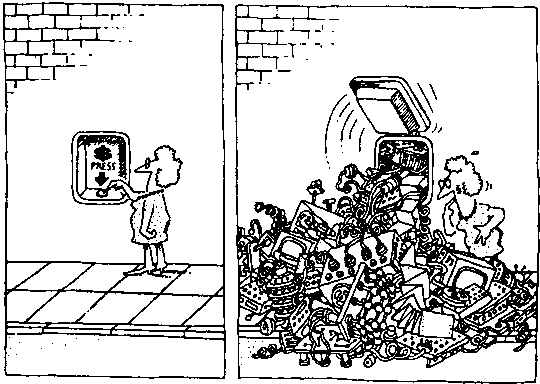Scientific basis
Nicholas Zharkikh
The upper sections present a popular (as far as possible) account of the historical fate of the Chernihiv principality. I deliberately did not go into the discussion of debatable issues there (although almost every issue is debatable!), believing that for the vast majority of readers, discussions on subjects they know little about will be boring and incomprehensible.
I like to draw the following picture on various occasions. I think he illustrates our situation very well.

Software must create
an illusion of simplicity
(Figure from the book: Buch G. Object-oriented programming. – Moscow: Concord, 1992, p. 12.)
The popular sections above are a scientific picture of events, in which the various fragments of the broken amphora are logically fitted (well, as far as possible), and the gaps are filled with a neutral restoration background (that is, the minimum necessary assumptions). But if an inquisitive reader wants to know how such a relatively smooth picture was formed and where the author of the beginning of the 21st century learned about the events of the 13th century – you should press the button, as in the picture, and then deal with the whole uncombed mass of source evidence, attempts at their later understanding and explanation, with frank late fabrications that imitate "ancient sources", and with a powerful mass of research fantasies.
All considerations on these topics are transferred to the "technical basement" of the work, which is now revealed to you. The excursuses include additional literature on specific, narrow issues and arguments for my views on debatable points (and our topic is such that almost all points are debatable in it…).
At the very end, the section "Historiography" is presented, in which I consider only those works that give a general image of the Chernihiv principality or the place of this principality in the general system of the history of ancient Rus’.
